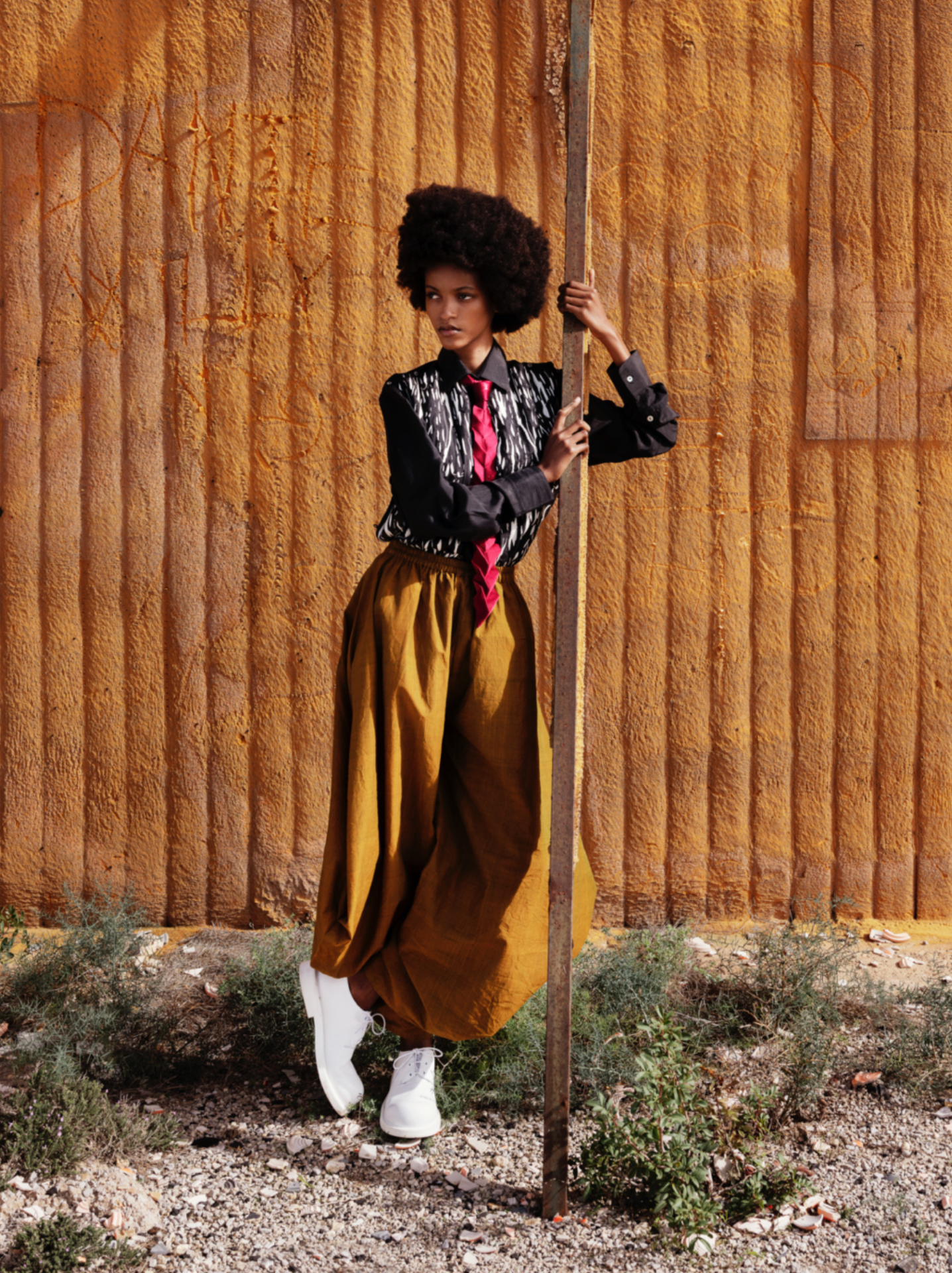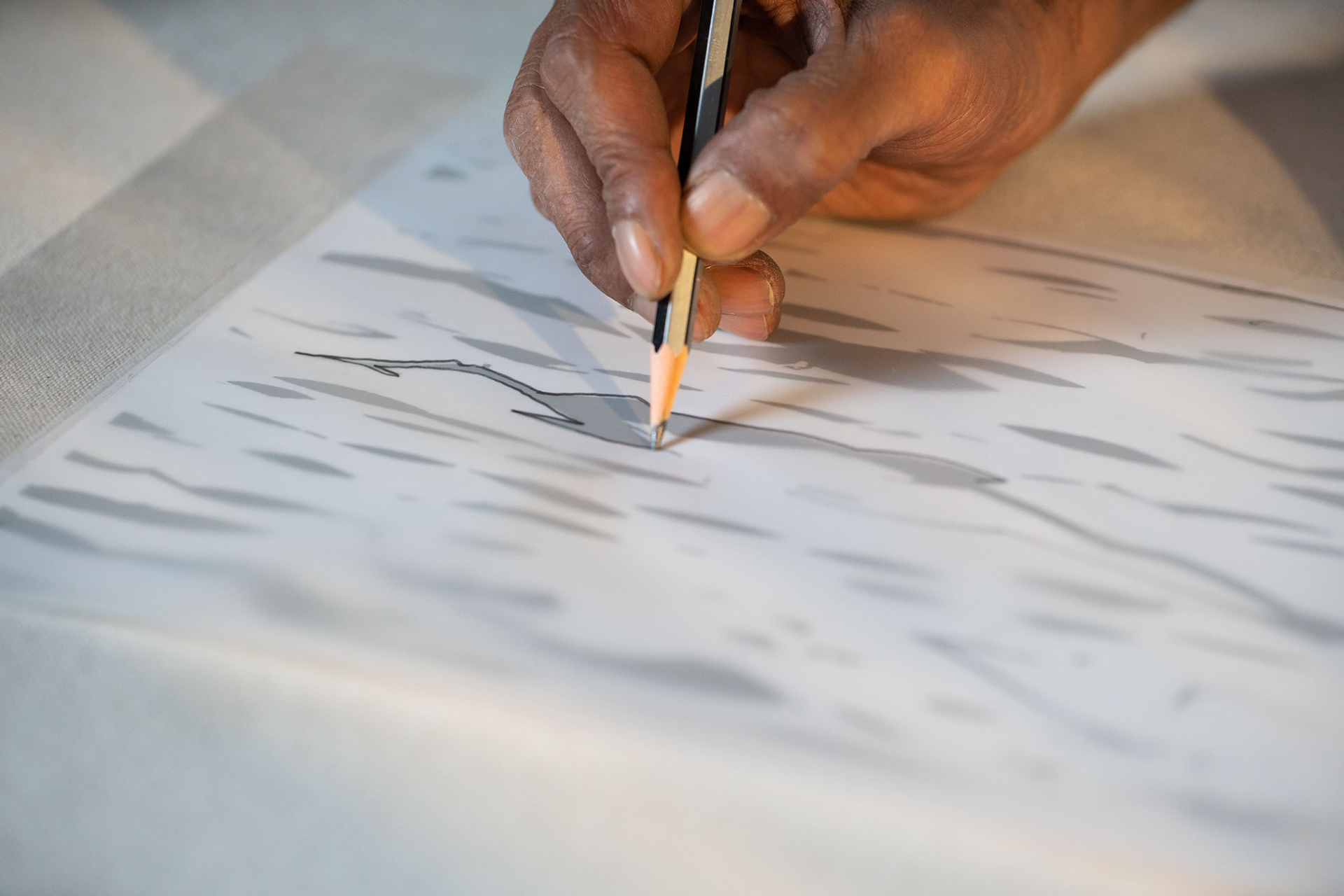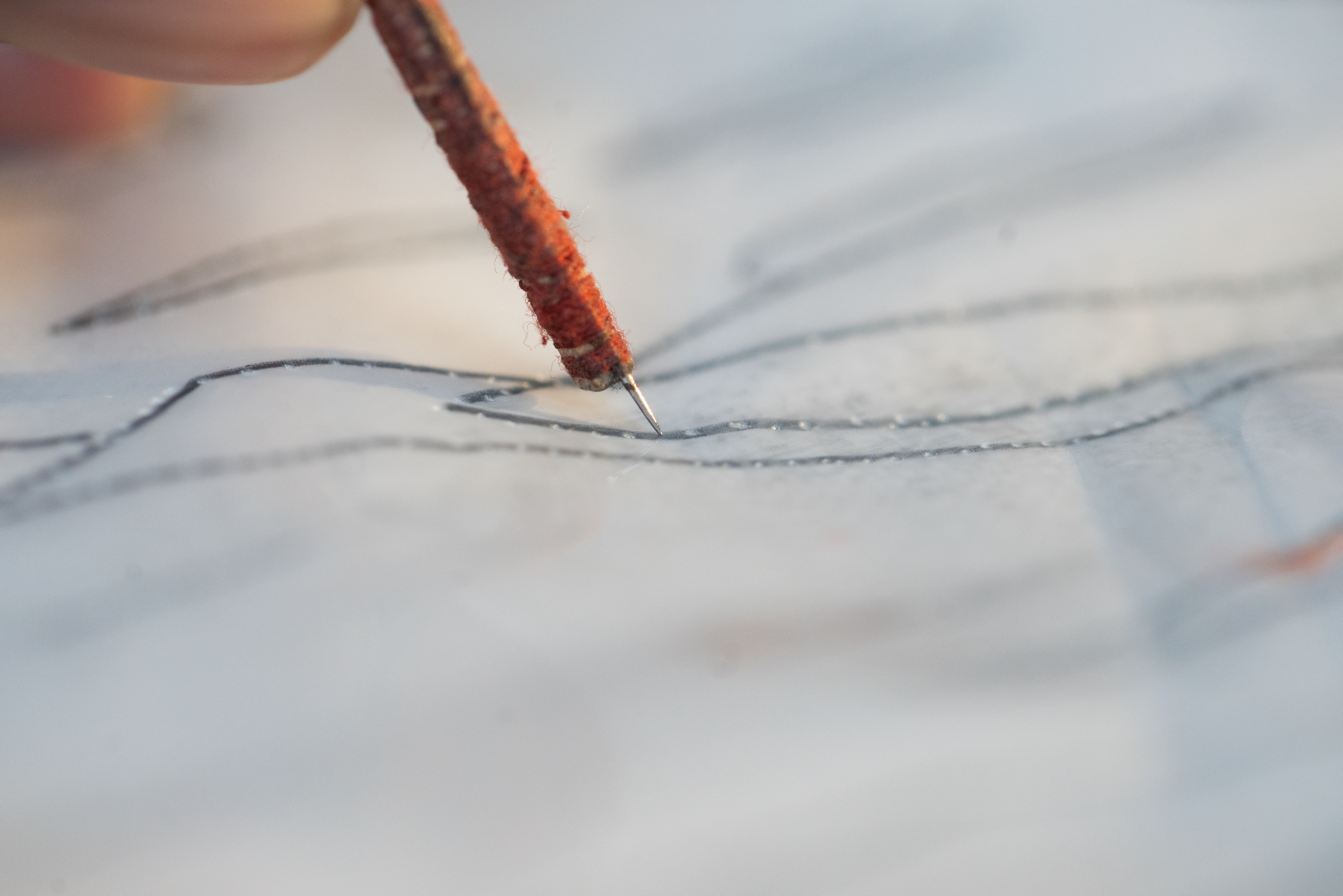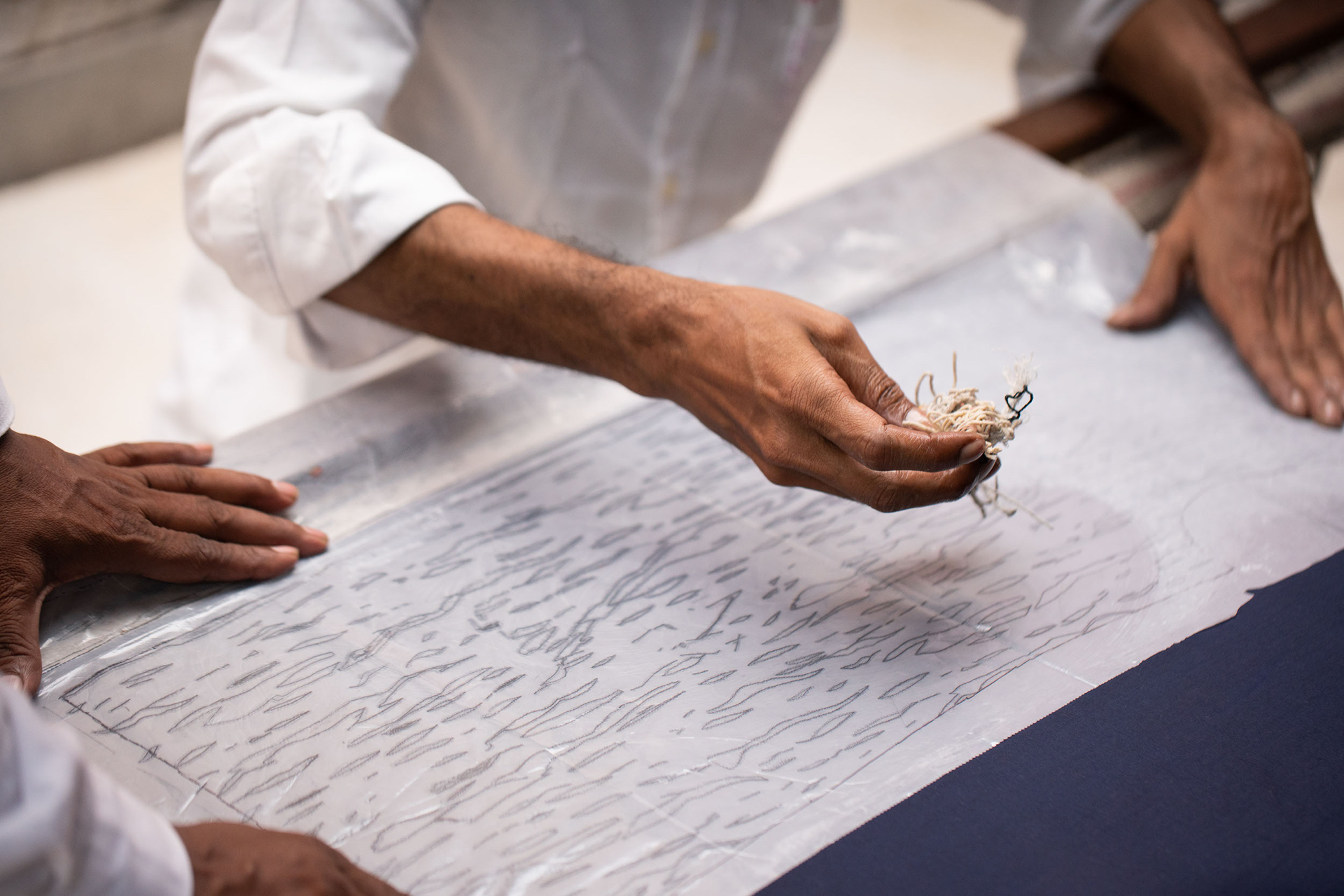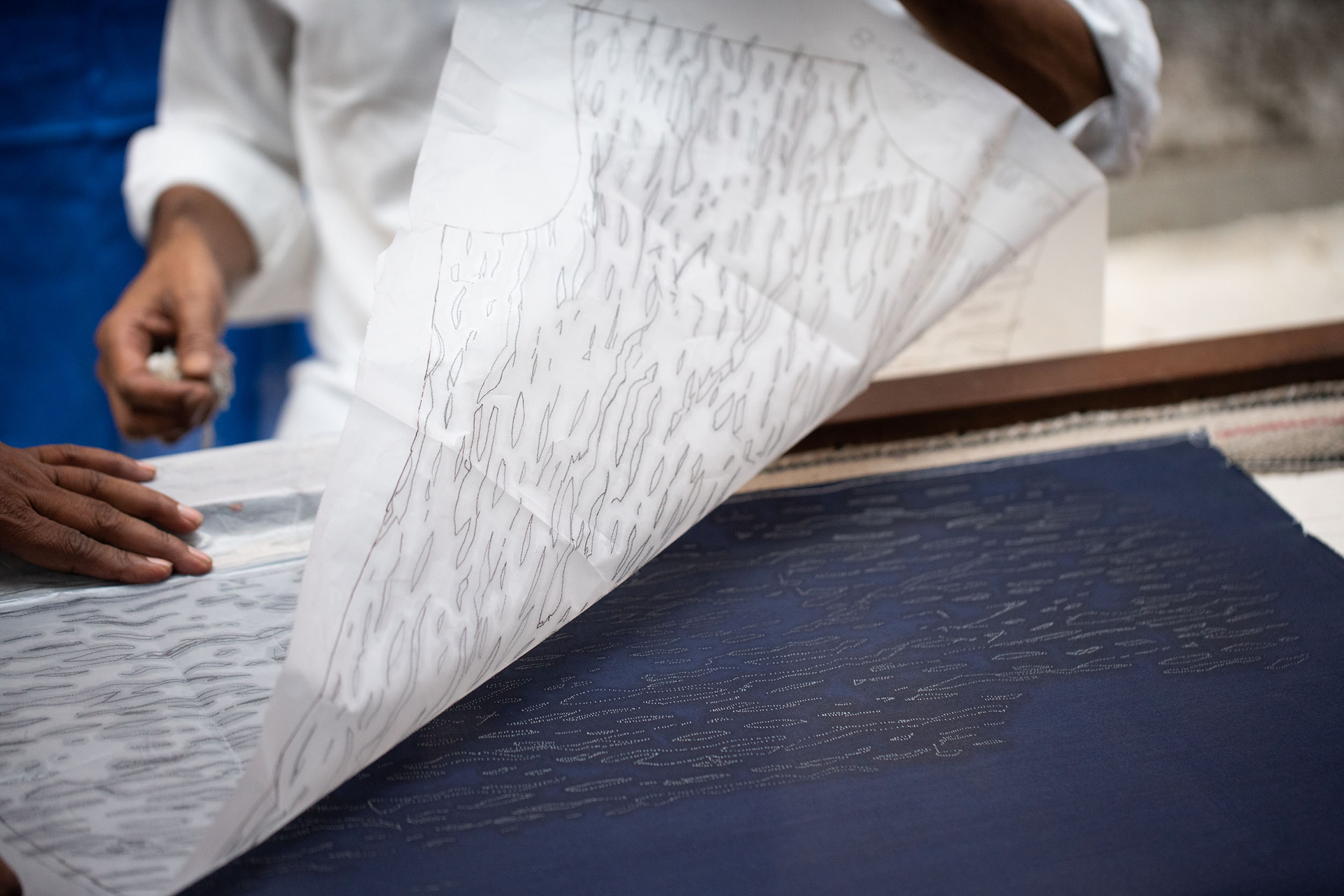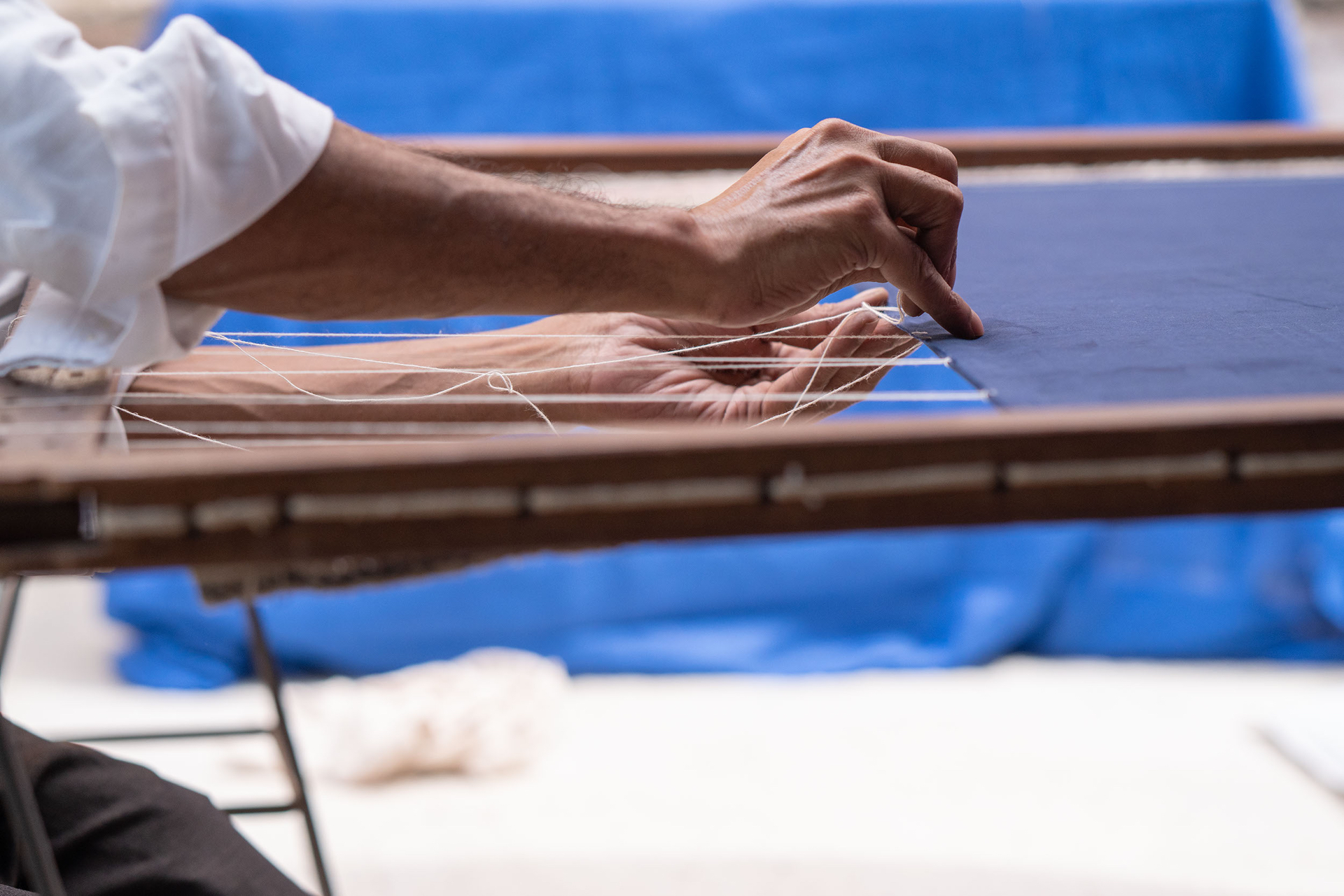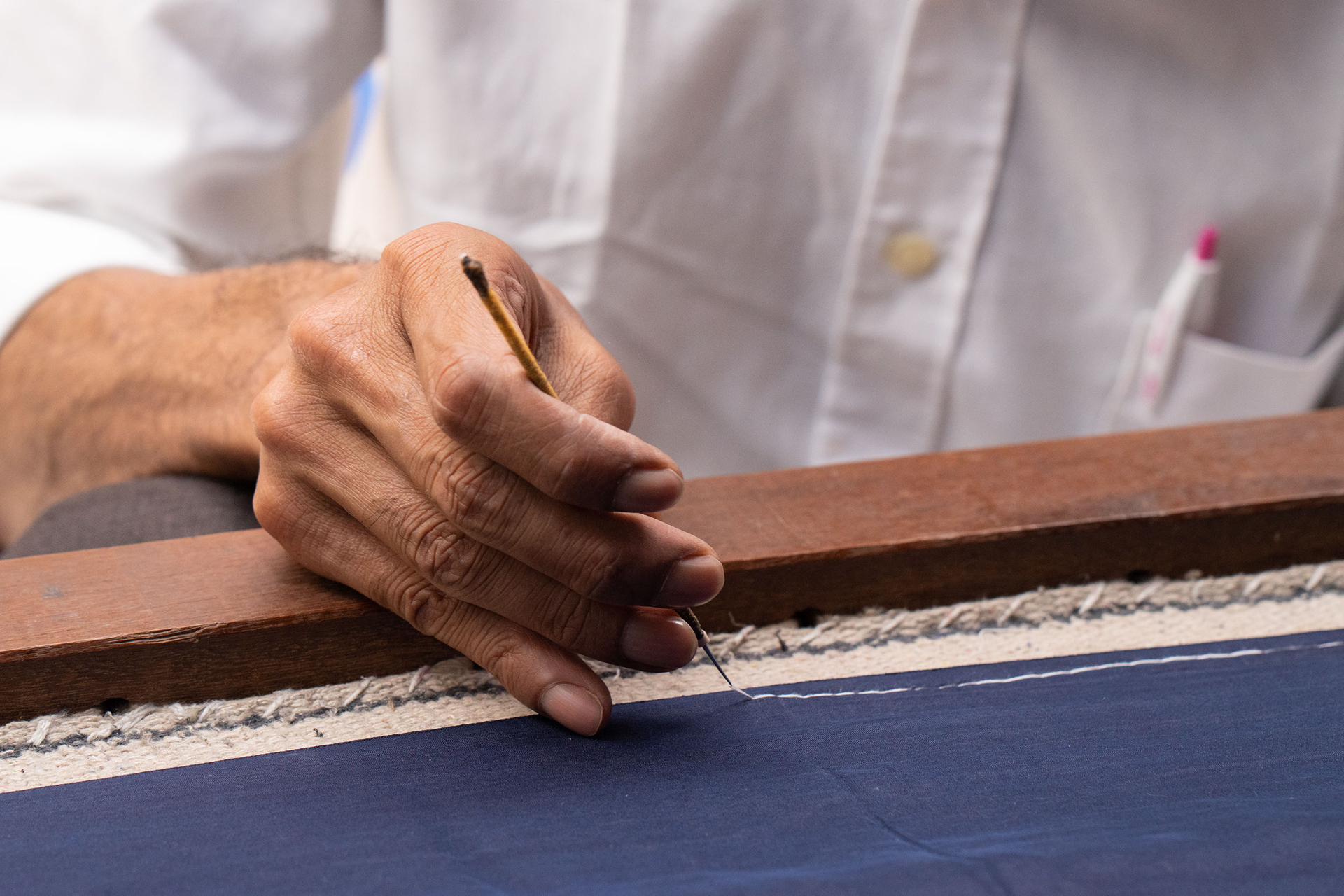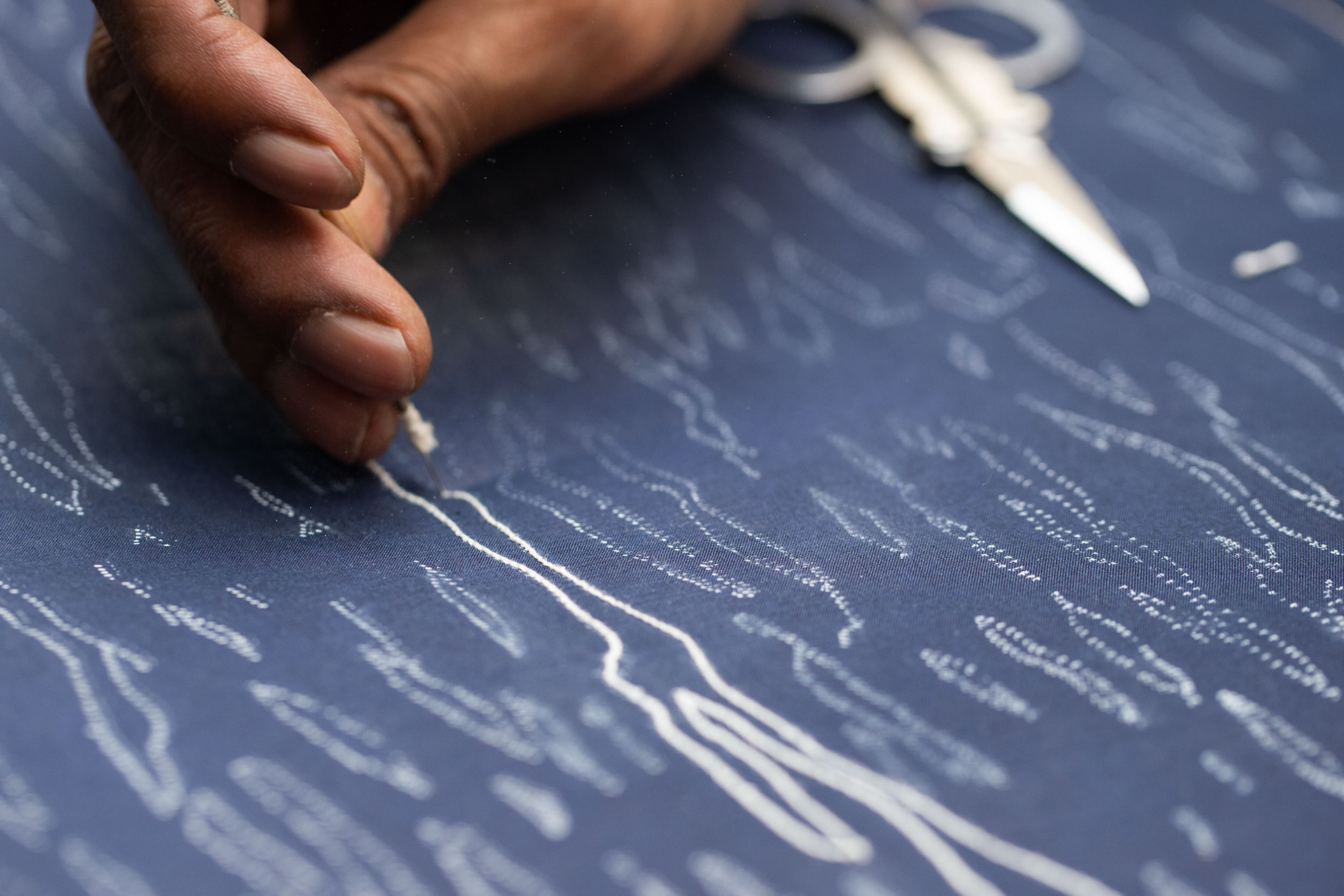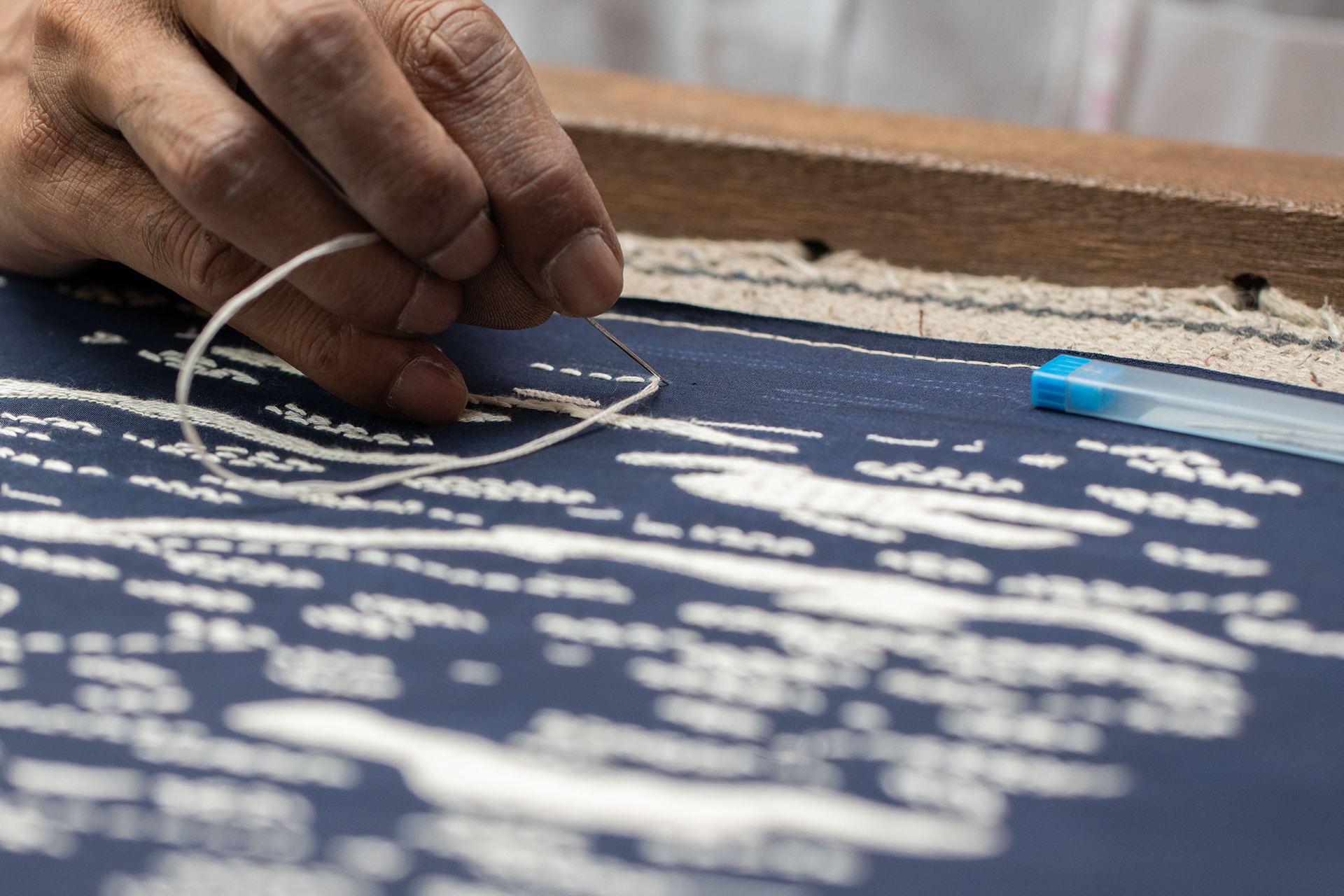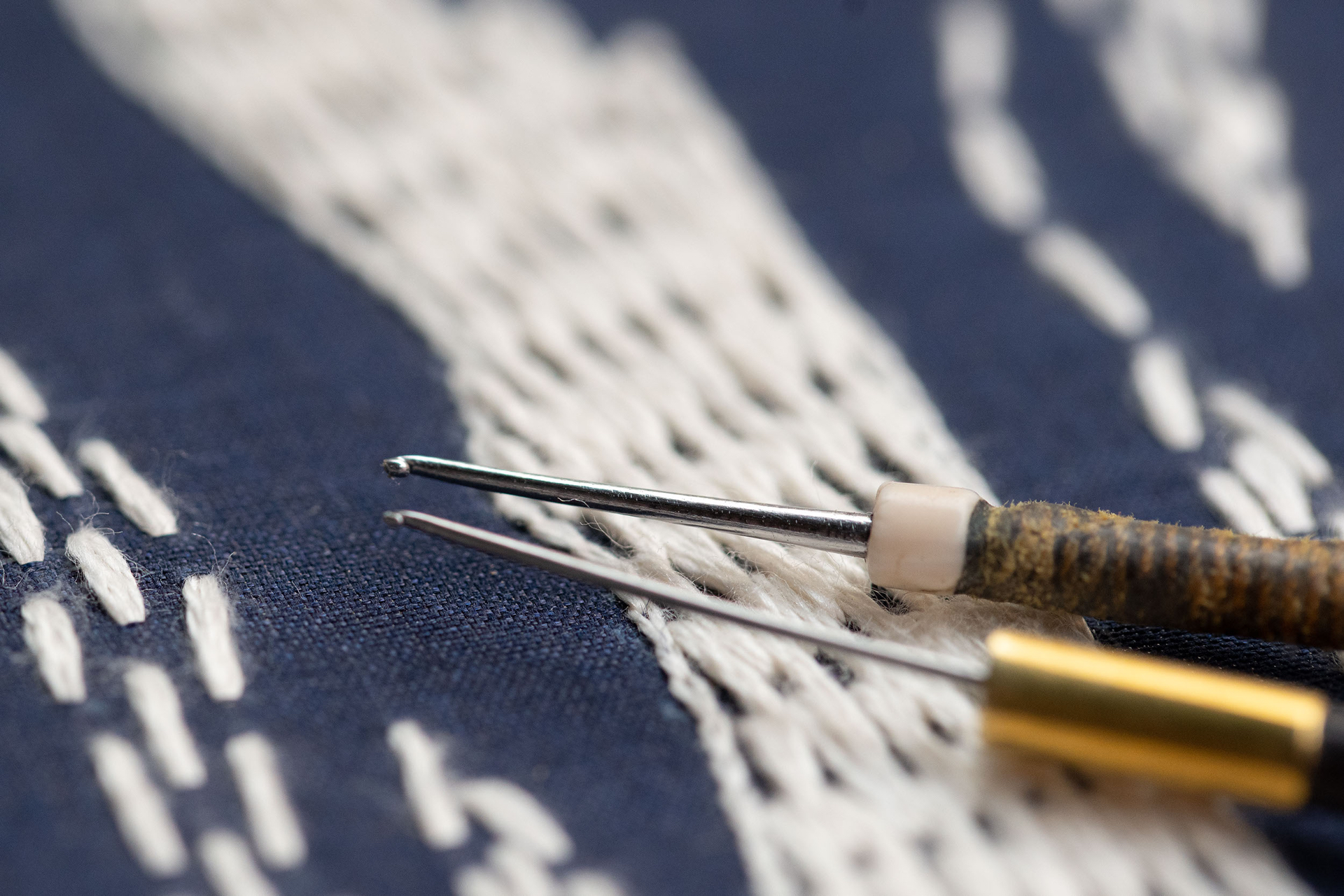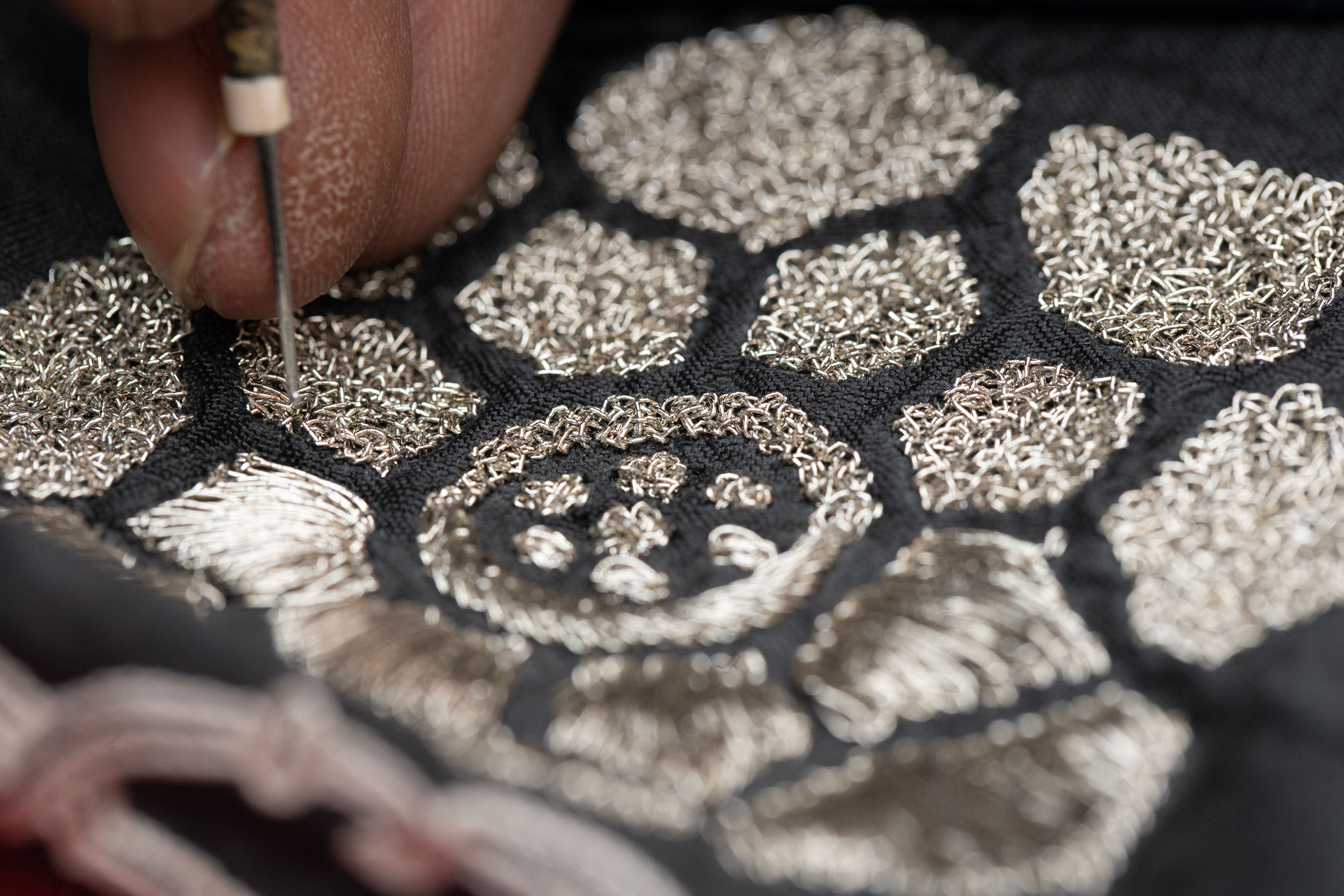The skill of Indian embroiderers in transforming the look and feel of any fabric is perhaps unparalleled in the entire world. Traditional embellishment of textiles has evolved in different regions throughout the subcontinent, leading to a vast array of techniques and motifs. Embroideries practised in India have used a dazzling variety of materials, including different fabrics, coloured cotton and silk threads, metallic threads, mirrors, beads, and shells to name a few. Every form of embroidery creates its own unique texture and visual impact. Zardozi, for example, is a technique that uses metallic threads of silver and/or gold to create dense and rich designs that shimmer against the light.
Contemporary designers are re-inventing the application of traditional textile practices by experimenting with unconventional materials and designs. Design houses such as White Champa are committed to drawing on the hereditary skills of Indian craftspeople, but at the same time the brand takes pride in meeting the needs of a contemporary market by creating bespoke, handcrafted garments. The images presented here show us the incredible abilities of textile artists to transform plain cloth into works of art.
The process begins with the master craftsman delicately tracing the pattern onto sheets of butter paper. These stencils, or khakas as they are called traditionally, form the first step in a long production process by which the idea for a design is given a definite form. Once the pattern has been completed, a needle is used to puncture holes in the design itself. After this, the paper is placed on the chosen fabric and is gently brushed with a powder that seeps through the perforations and marks the cloth.
This simple process of transferring the motif from paper to cloth is done after the selected fabric has been stretched and firmly secured onto a wooden frame, or a karchob, as it is known locally. This traditional structure is a horizontal, wooden, floor-mounted frame that helps artists create their designs. It is comprised of four wooden bars – two short horizontal rods and two long vertical poles called adda. The cloth is stretched and fixed across the frame using additional cotton fabric and threads.
Depending on the size of the cloth, larger karchobs allow multiple embroiderers to work on a single piece at the same time. Although several hand embroideries are practised without any additional implements, the karchob becomes a valuable tool for larger pieces as it holds the fabric tightly. That enables artists to easily move the needle through the cloth. The frame also provides support for the hands and arms of the craftsmen, who often work for long hours under strenuous conditions. The two embroidery techniques that are mostly practised on the karchob are Aari and Zardozi, both of which have been used in the garment being produced here.
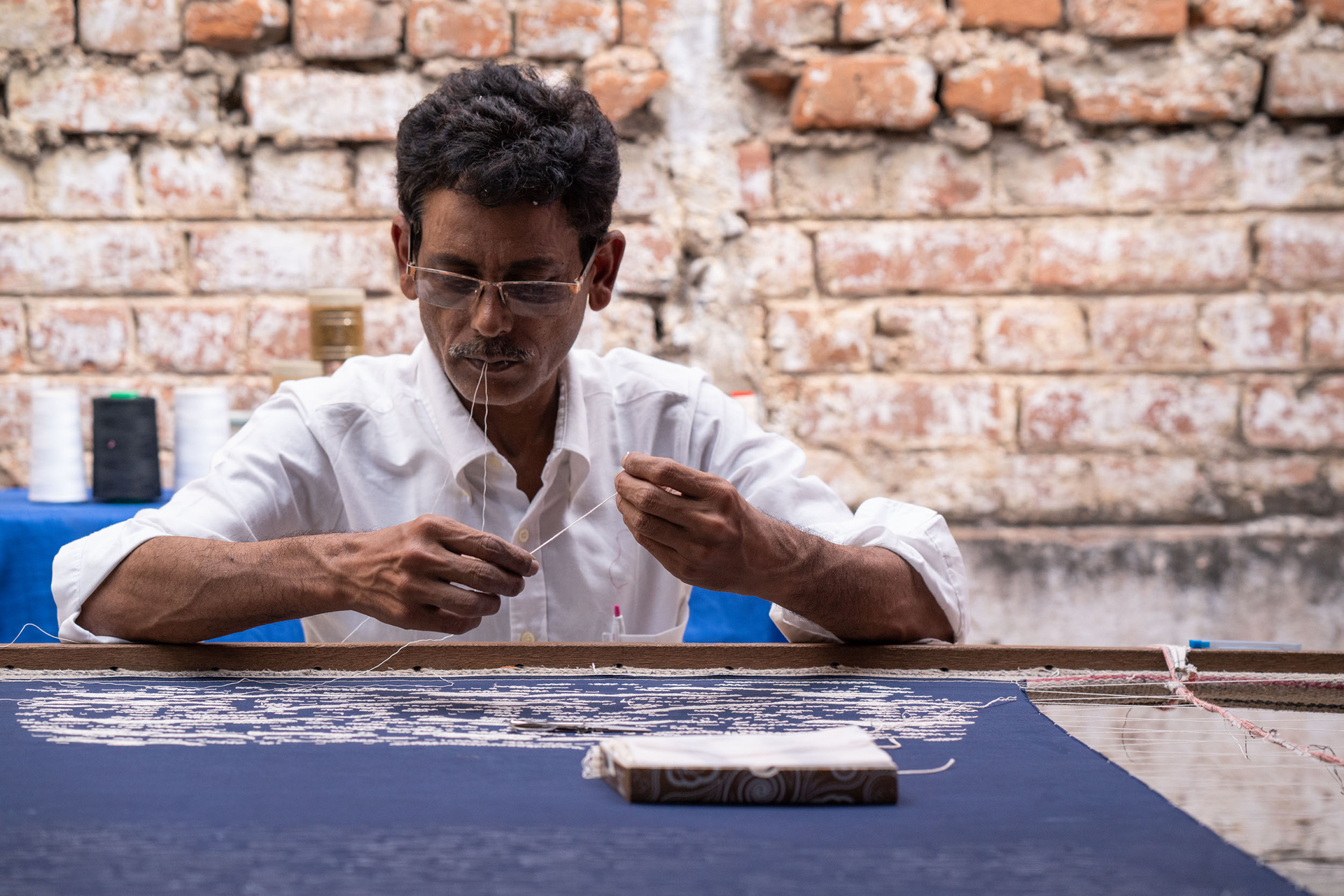
Once the design is traced on the fabric, the Aari, or chain-stitch embroidery work, begins. On the indigo silk ground, as seen in this image, the artisan uses white anchor threads to create patterns. The constant rhythmic movement of the needle and thread – and the immense precision it takes every time the needle pierces the surface of the cloth – is a skill that is perfected over a period of several years. The majority of the craftspeople currently engaged in the handcraft sector in India have acquired their knowledge from older members of their family. Traditionally, several generations of a household would work together in a workshop, or karkhana, set up in their homes. Children would begin their apprenticeships in the trade within this family set-up.
Apart from the use of the ubiquitous needle and thread seen in these images, the Aari technique utilises a special needle, also called an aari. This implement is a fine awl consisting of a small, thin metal rod attached to a needle that has a crochet-like hook with a notch on the end; it is generally wrapped around with thick cotton thread, which allows for a firm grip. In this craft, the thread is held underneath the fabric as the aari needle is pushed through the cloth from above. The thread is then wrapped around the needle and is pulled back through, forming a small loop on the surface. The tip of the aari needle is then inserted through this small circle and pushed once again into the fabric.
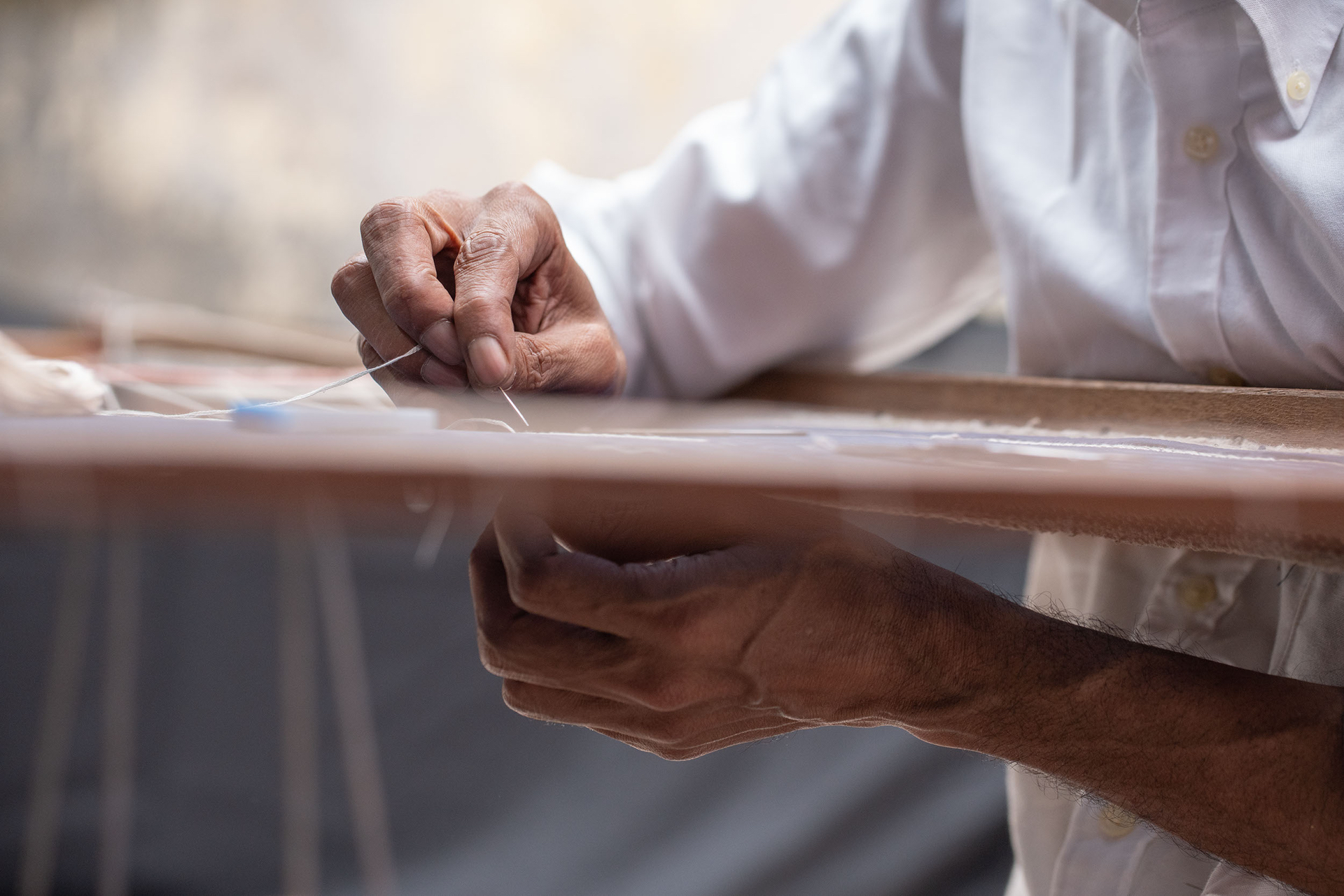
As this intricate process is followed repeatedly, it creates the chain stitch on the textile. In certain examples where the Aari work is done using a metallic thread, once the embroidery is completed, the artisan flattens the surface of the metal threads by using a wooden dabber below the surface of the cloth for support and a small wooden hammer to gently tap the threads at the top. This gives a smooth and shiny texture to the embroidery.
Zardozi, another opulent form of embroidery in India, is also showcased in these images. This technique uses metal threads and needles to create elaborate patterns. Though gold and silver threads have been used in India since ancient times, the craft of Zardozi originally made its way to the subcontinent from Iran. The word Zardozi itself is derived from the Persian words “zar” (which translates as gold and silver) and “dozi” (which denotes karigari, or craftsmanship). Mughal patronage in the medieval period witnessed the expansion of this art form, which brought increasing levels of sophistication. The craft experienced considerable decline during the colonial period. But from post-Independence onwards it has seen a steady rise in demand and popularity.
The technique uses gold and silver threads and is finer in execution than Aari, as the craftsman uses one hand above the cloth to sew, while below the surface the other hand ties each stitch. This also makes Zardozi works very durable. The craft continues to be performed manually by expert artisans, with some still utilising the highest grade of gold and silver thread. The sheer magnificence of a Zardozi garment remains unmatched even in modern-day fashion trends.
Once the embellished fabrics are completed, the pattern maker begins tailoring the garment. The finished product here is a black, shirt with two embroidered detachable panels at the front – a superb example of Indian craftsmanship at its very best.
